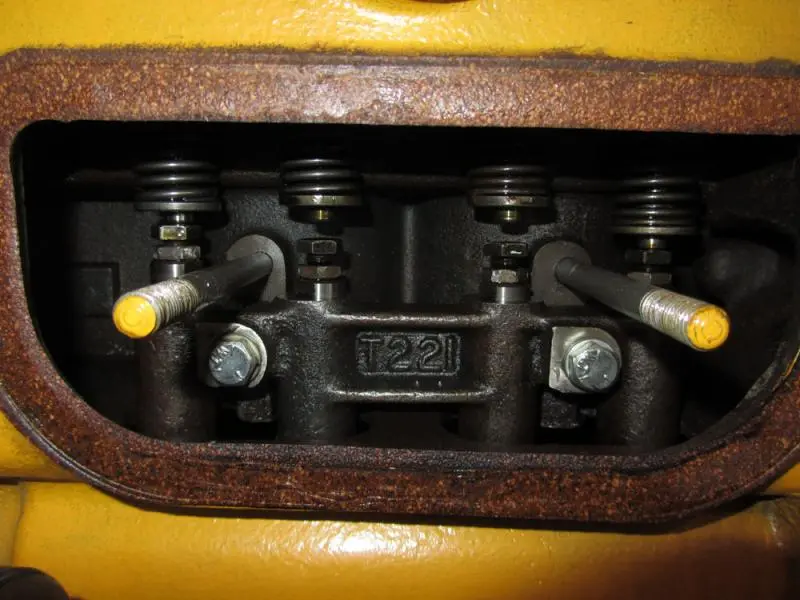
I think you are going to have to fill the intake manifold to really get the stuff on the guides and stems. How much trouble would it be to take the carb off and block the flange. Then if you put kerosene or diesel in the cylinder with the intake valve open it will fill the manifold and rise up around the valve stems. You can rotate the engine or work the valves up and down through the adjustment covers and the stuff should work its way into the guides.
Not sure if its possible, but do you think you can pry (carefully) through the plug hole and get the valve to go back down.
I should have said spray Kroil not pour. I can point the spray nozzle towards the intake valve hoping to coat the valve stem.
Maybe it will creep in there and free up the valve.
Pat
I would do just what you are doing I think with a straw on you sprat can you may get some on the valves throw the spark plug hole
I have to do this before. I think you are on the right track. Do the least evasive first. Keep soaking it and working it. It should come loose.
Terry
For what it's worth, the Hercules engine on my Harris combine did this on a few intake valves. I soaked them good through the spark plug holes. Then I was able to use a brake spoon to reach through hole and CAREFULLY pry the valve back down. Actually you just had to move them a bit and they would snap down on their own. A few rounds of this and all was well.
What brought the stuck valves on was a freak hail storm that blew into my shed from the opposite direction as normal, soaking the engine. I didn't realize what had happened for about a week. Lucky for me I was able to fix it without pulling the head.
Good luck.
Bruce P
Pat, not saying this is your particular cause, but I have seen old varnished gas stick the valves. Flat heads are more susceptible to this as the gas does do atomize as well and coats the valve stems and runs down between the stem and guide. It takes almost nothing to stick those. All of these early gas cats had very low spring pressure at the installed height. It's amazing how little oil gets splashed up even on the tappet bores in the engines let alone the valve/guide area. I have run 10's and 15's without the side covers on and never even had a spec of oil come out.
Thanks ccjersey, Jeff, Terry, Bruce P and Chad.
I'm feeling more relieved already! This engine can't have more than 50 hours on it since a complete overhaul. I really was hoping not to have to pull the cylinder head.
I am going to start spraying today and everyday until I get them freed up. If I can get them freed up in time, I will haul it to my nephews farm and put it work for a good half day. The old girl has been sitting too long in my garage and needs to get out and do what it does best.
Chad, you may have hit the nail on the head there. Since this tractor only sees use going to shows, I would never burn through the gas in the tank. Each Fall I would add a stabilizer. So I know for sure the gas that is in there is two years old. I've since drained the tank and am burning it in my lawn mower now. Your explanation makes the most sense to me and I will be more vigilant around this flat head (the tractors and mine).
Pat
Pat, if this is the case use a cleaner of some sort to cut the varnish. Carb cleaner, brake clean, etc. Once they loosen up, which shouldn't be too tough then you can rotate the engine to open the valves once again and lube with oil, etc.
Fresh gas is always a good thing. We all understand how easy it is to never use up the gas in a tank during show season. If you do take it to the field to run it around, put just a little ATF in the new gas. Just enough to barely tint the gas.....say 1/2 qt to 2 gallons. The high detergent content in the ATF will clean the valves and guides as well as lube them. It will not be enough to cause it to smoke. Keep us posted with how it goes.
We had a stuck valve problem every winter, on the JXC Hercules engines on our 36B John Deere combines, in a closed shed. We finally solved it by running the engines after they were parked for the winter and pouring engine oil in the intake until we finally drowned the engine. In the ten or more years we ran the machines we never had another stuck valve.